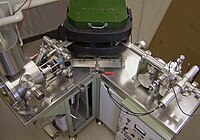Isotope fractionation

Isotope fractionation is like sharing candy with your friends. Imagine you have a jar of M&Ms, and you want to share them with your friends. But you notice that there are different colors of M&Ms – some are red, some are blue, some are green, and so on.
Now imagine that you and your friends are all really hungry, so you start eating the M&Ms as fast as you can. But you soon realize that some of your friends really love the red M&Ms, and they're eating a lot more of those than the other colors. Meanwhile, other friends prefer the blue or green M&Ms.
As a result, the jar of M&Ms is starting to look unbalanced – there are fewer of some colors and more of others, depending on who ate them. This is kind of like what happens with isotopes.
Isotopes are different versions of the same atom that have different numbers of neutrons in their nucleus. Some isotopes are heavier than others because they have more neutrons. When these isotopes are present in a substance, they can behave differently depending on their weight.
For example, when water evaporates from a puddle or a lake, the light isotopes of water (with fewer neutrons) tend to evaporate more easily than the heavy isotopes (with more neutrons). This means that the water vapor that rises up into the sky is enriched in light isotopes compared to the liquid water left behind at the surface, which is now enriched in heavy isotopes.
This separation of isotopes based on their weight is called isotope fractionation. It happens in lots of different natural processes, and scientists use it to understand the chemistry and physics of the Earth and its environment.
Now imagine that you and your friends are all really hungry, so you start eating the M&Ms as fast as you can. But you soon realize that some of your friends really love the red M&Ms, and they're eating a lot more of those than the other colors. Meanwhile, other friends prefer the blue or green M&Ms.
As a result, the jar of M&Ms is starting to look unbalanced – there are fewer of some colors and more of others, depending on who ate them. This is kind of like what happens with isotopes.
Isotopes are different versions of the same atom that have different numbers of neutrons in their nucleus. Some isotopes are heavier than others because they have more neutrons. When these isotopes are present in a substance, they can behave differently depending on their weight.
For example, when water evaporates from a puddle or a lake, the light isotopes of water (with fewer neutrons) tend to evaporate more easily than the heavy isotopes (with more neutrons). This means that the water vapor that rises up into the sky is enriched in light isotopes compared to the liquid water left behind at the surface, which is now enriched in heavy isotopes.
This separation of isotopes based on their weight is called isotope fractionation. It happens in lots of different natural processes, and scientists use it to understand the chemistry and physics of the Earth and its environment.
Related topics others have asked about:
